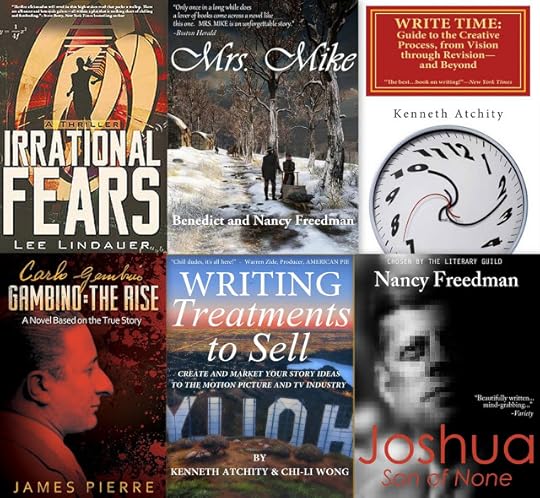Kenneth Atchity's Blog, page 112
September 10, 2018
September 8, 2018
Terry Stanfill (Realms of Gold) Featured in Le Chatillon Ai et L'Auxois
Published on September 08, 2018 00:00
September 6, 2018
Story Merchant Client Terry Stanfill's Realms Of Gold Kirkus Review


REALMS OF GOLD Stanfill’s (The Blood Remembers, 2001) novel follows an unlikely pair of lovers as they piece together an ancient puzzle that will shed light on an age-old mystery.
In 1953, an archaeological team working in Vix, a small town in the Burgundy region of France, found the 2,500-year-old tomb of a woman some claim to have been a Celtic princess. The burial site, surprisingly well preserved, housed both the woman’s body and a treasure of immeasurable value that included a perfectly intact krater (a ritual wine vessel) likely cast in Southern Italy. While the groundbreaking find revealed much, it left many questions unanswered: Who was this mysterious woman? Why was she entombed with such treasure? And what was the origin of the foreign urn? These questions—which still vex experts today—drive Stanfill’s scintillating tale of intellectual discovery and budding romance.
In contemporary Venice, Bianca Evans Caldwell—an American author—crosses paths with archaeologist Giovanni de Serlo at a wedding and immediately falls for the suave, confident Italian. But neither suspect that this chance meeting would send them both on a continent-spanning adventure that will help solve the mysteries of the Vix krater and the sleeping princess, all the while delivering surprising new insights into the mythology of England and France. Stanfill’s narrative initially feels ornate, but it morphs into a lively, precise plot. The author pours her estimable learning into this, her fourth novel, and she’s equally comfortable writing about the nuances of ancient art, the links between myth and history, and the nooks and crannies of modern-day Italy. And though her book seems by turns a travel guide or an archaeology textbook, its details only add verisimilitude to a satisfyingly complex story of love, learning and intrigue in Europe.
An erudite thriller that recalls Brown’s Robert Langdon series—only smarter.

Published on September 06, 2018 00:00
September 4, 2018
Three Bags Full by Dennis Palumbo for Femme Fatales
The Femmes welcome author Dennis Palumbo, a licensed psychotherapist and Hollywood screenwriter ( My Favorite Year, Welcome Back, Kotter , and more.). Dennis's his fifth thriller, Head Wounds, features Daniel Rinaldi, a psychologist and trauma expert who consults with the Pittsburgh police. www.dennispalumbo.com. Enjoy his story. -- Elaine Viets

How my latest Daniel Rinaldi thriller let me check three items off my writing bucket list
By Dennis Palumbo
In the years since I began my series of mystery thrillers featuring Daniel Rinaldi, a psychologist and trauma expert who consults with the Pittsburgh Police, I’ve wanted to do three particular things with the series. And yet it wasn’t until I wrote the latest, HEAD WOUNDS, that I got my chance.
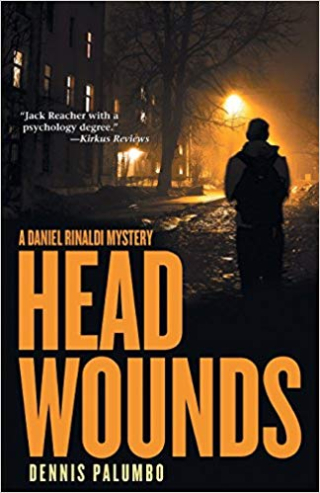
First, I was able to write about the delusional condition called erotomania (also known as De Clerambault’s Syndrome). As both a therapist and a mystery author, I’ve always been fascinated by it.
imply put, erotomania is a disorder in which someone falsely believes that another person is in love with him---deeply, unconditionally, and usually secretly. The latter because this imaginary relationship must be hidden due to some social, personal or professional circumstances. Perhaps the object of this romantic obsession is married, or a superior at work. Often it’s a famous athlete or media celebrity.
Not that these seeming roadblocks diminish the delusion. Instead, they can even provide a titillating excitement. Often, a person in the grip of erotomania believes his or her secret admirer is sending covert signals of their mutual love: for example, wearing certain colors whenever a situation puts them together in public; or doing certain gestures whose “special” meaning is known only to the two of them. Some even believe they’re receiving telepathic messages from their imagined beloved.
What makes the delusion even more insidious is that the object of this romantic obsession, once he or she learns of it, is helpless to do anything about it. They can strenuously and repeatedly rebuff the delusional lover, denying that there’s anything going on between them, but nothing dissuades the other’s ardent devotion.
I know of one case wherein the recipient of these unwanted declarations of love was finally forced to call the police and obtain a restraining order. Even then, her obsessed lover said he understood that this action was a test of his love. A challenge from her to prove the constancy and sincerity of his feelings.
What makes erotomania so intriguing as a psychological condition, and so compelling in an antagonist in a thriller, is the delusional person’s ironclad conviction---the unshakeable certainty of his or her belief.
Which brings me to the second box I got to tick off on my thriller-writing checklist: while the previous Daniel Rinaldi novels emphasized narrative twists and psychological suspense, there was always a whodunnit aspect to the story. The reader doesn’t learn the identity of the bad guy until the end.

However, with HEAD WOUNDS, I had the perfect opportunity to reveal to the reader right up front who the villain is: Sebastian Maddox, a computer genius who, in the grip of erotomania many years before, had killed Daniel Rinaldi’s wife Barbara, disguising the murder as a mugging gone wrong. Having formed a psychotic obsession with Barbara before she’d even met her future husband, Maddox is outraged when he learns that she and Rinaldi had gotten married. To his mind, the marriage was an unacceptable betrayal of the love that he believed he and Barbara shared.
So, instead of a whodunnit, HEAD WOUNDS turns on a deadly cat-and-mouse game---all these years after Barbara’s death--- between Sebastian Maddox, who’s spent ten years in prison on an unrelated drug charge, and Daniel Rinaldi. After a decade’s careful planning, stewing in his jail cell, Maddox can now complete his mission of revenge.
Since I’d never written a mystery in which both the bad guy and his motive were clear from early on, writing this latest book caused more than a few narrative headaches along the way. But it sure was fun.
Which brings me to the third element of the Rinaldi series that has plagued me since the beginning: namely, what had actually happened to the psychologist’s wife that fateful night? Seasoned crime readers certainly know (or at least suspect) that a simple mugging is never either simple nor, in fact, a mugging. So why did Barbara Rinaldi die? And, more importantly, who wanted her dead?
Throughout the release of the previous novels, I’ve heard from many readers wanting to know what really happened to Rinaldi’s wife. Now, at last, I got to answer them. As well as provide myself with a satisfying resolution to an important aspect of Rinaldi’s back-story.
What can I say? I’m a therapist. I like closure.
*****************************************************************************************
Buy Head Wounds here.
Read more

Published on September 04, 2018 00:00
September 3, 2018
Steve Alten he Meg's Writer Explains Where The Meg 2 Could Go

The Meg has become a somewhat unlikely global hit, which, of course, creates the inevitable question, could there be a sequel? Well, since The Meg is based on a novel, which itself has several sequels, there's plenty of material to draw from for future Meg movies. The author of the original book, Steve Alten, thinks that there is plenty of stuff in the follow-up books that would make for great follow-up movies. Now that the first movie has introduced the idea of prehistoric creatures being alive today, sequels can have fun with different monsters just the way the books have. According to Alten...
The thing about the book series is, I just finished book 6, Meg: Generation, and each book ups the ante a little bit more. So if the producers, and [producer] Belle Avery especially I know she will follow the sequels. If they follow the sequels then they won't have to reinvent the wheel. Because it takes it to new places and introduces new monsters. A lot of people like dinosaurs, and I did, too, growing up. But the sea creature monsters and dinosaurs are much more fearsome than the land creatures. There's the T-Rex, but that is pretty much all you really have on the land. In the ocean you have some amazing sea creatures, and I'd love to see them all brought back to life.The Meg is the most recent in a film tradition of giant monster movies, and when previous films in the genre became successful sequels frequently happened. When they did, there were some obvious ways for them to work. One was to create more monsters, the other was to create bigger monsters. The book sequels to The Meg do both of these things and Steve Alten tells Metro there's no reason the movies can't follow suit.
Read more

Published on September 03, 2018 00:00
September 2, 2018
Kirkus Reviews Praise for Story Merchant Client Robin Johns Grant's Debut Novel Summer's Winter

Available on Amazon
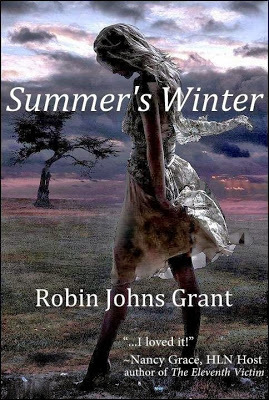 In Grant’s debut novel, a young woman’s fascination with a Hollywood star affects her life in ways she never could have imagined.
In Grant’s debut novel, a young woman’s fascination with a Hollywood star affects her life in ways she never could have imagined.For years, 21-year-old Jeanine DeValery has been in love with Danny Summer, a character from a book series, played in a series of films by movie star Jamie Newkirk. Jeanine, in her adolescent confusion, believes that God promised her that the actor—or the character he played—would change her ordinary Georgia life into something more romantic. When the author of the book series dies in a mysterious fire, Jeanine grieves but continues to believe in her destiny. Soon, her dream seems to be coming true, as Jeanine’s adored actor enters her life for real and seems to be falling for her. At the same time, she finds out about plans to restart the film series. But things aren’t as romantic and perfect as she had imagined: Jamie’s former girlfriend suspiciously dies, in the same house in which his mother apparently committed suicide two years before. Both women had similarly shaped burn marks on their skin. Jeanine soon finds out a host of strange things about the people involved in the film series, uncovering other mysterious deaths and battles over money and power. She also finds out that Jamie is keeping secrets about his family—but even after he’s arrested, Jeanine dedicates herself to proving his innocence. This complex story is told in lush, heated prose (“Heaven is as tangible as the taste of a juicy peach on a hot day, as easy and close as stepping out the school door and into another world at recess”), with a clear underpinning of Christian ethics (“Not once in the sleazy motel parking lot had [Jeanine] thought about what God wanted her to do”). Readers drawn to Christian fiction will find much to keep them turning pages. For secular readers, however, some of the story’s coincidences may be a bit difficult to believe.
A passionate, well-wrought mystery by a Christian novelist to watch.
Reposted from Kirkus Reviews

Published on September 02, 2018 00:00
September 1, 2018
Truth Is That A Screenplay Can Be Written In One Week by Dr. Ken Atchity

Published on September 01, 2018 00:00
August 31, 2018
Story Merchant Books - August Bestsellers
Published on August 31, 2018 10:55
August 30, 2018
tbt - CONGRATULATIONS to Atchity-Wong Client Alan Roth - Nicholl Fellowship in Screenwriting Winner!
 Academy Reveals Nicholl Fellowship in Screenwriting Winners The $35,000 prizes will be presented at a Nov. 7 event, which will include readings from the chosen screenplays directed by Rodrigo Garcia.
Academy Reveals Nicholl Fellowship in Screenwriting Winners The $35,000 prizes will be presented at a Nov. 7 event, which will include readings from the chosen screenplays directed by Rodrigo Garcia.
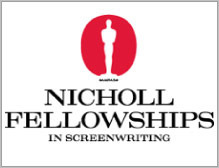 The Academy of Motion Picture Arts and Sciences has awarded Nicholl Fellowships in Screenwriting to four individual writers and one writing team.
The Academy of Motion Picture Arts and Sciences has awarded Nicholl Fellowships in Screenwriting to four individual writers and one writing team.The winners, listed alphabetically by author, are Frank DeJohn & David Alton Hedges, Santa Ynez, Ca., for their screenplay Legion; Patty Jones, Vancouver, B.C., Canada, for Joe Banks; Alan Roth, Suffern, N.Y., for Jersey City Story; Stephanie Shannon, Los Angeles, for Queen of Hearts; and Barbara Stepansky, Burbank, Ca., for Sugar in My Veins.
Each winner will receive a $35,000 prize, the first installment of which will be distributed at an awards presentation on Nov. 7 at the Academy’s Samuel Goldwyn Theater in Beverly Hills. For the first time, the event also will feature a live read of selected scenes from the fellows’ winning scripts. Rodrigo Garcia is directing the event, which will include members of the actors’ branch and which will be produced by Julie Lynn and supported by Lexus.
The winners were selected from a record 7,251 scripts that were submitted.
Fellowships are awarded with the understanding that the recipients will each complete a feature-length screenplay during their fellowship year. The Academy acquires no rights to the works of Nicholl fellows and does not involve itself commercially in any way with their completed scripts.
The Academy Nicholl Fellowships Committee, chaired by producer Gale Anne Hurd, is composed of writers Naomi Foner, Daniel Petrie Jr., Tom Rickman, Eric Roth, Dana Stevens and Robin Swicord; actor Eva Marie Saint; cinematographer John Bailey; costume designer Vicki Sanchez; producers Peter Samuelson and Robert W. Shapiro; marketing executive Buffy Shutt; and agent Ronald R. Mardigian.
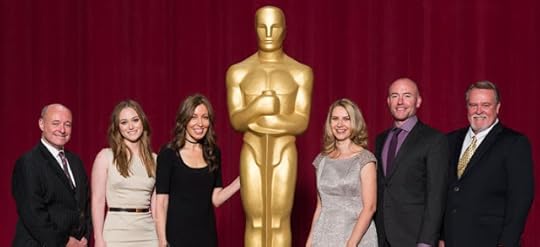
Four individual writers and one writing team have been selected as winners of the 2013 Academy Nicholl Fellowships in Screenwriting competition. This year's winners are Frank DeJohn & David Alton Hedges ("Legion"), Patty Jones ("Joe Banks"), Alan Roth ("Jersey City Story" end left), Stephanie Shannon ("Queen of Hearts"), Barbara Stepansky ("Sugar in My Veins").

Published on August 30, 2018 00:00




